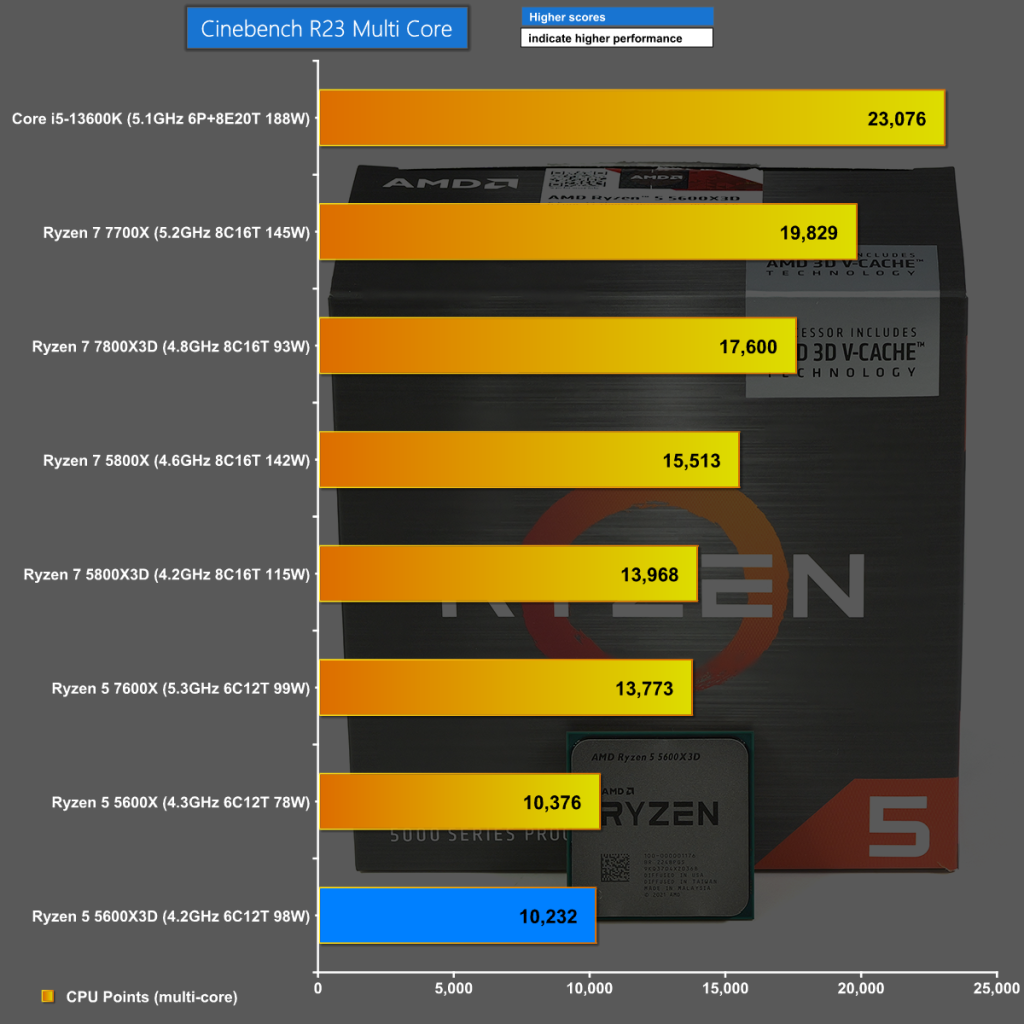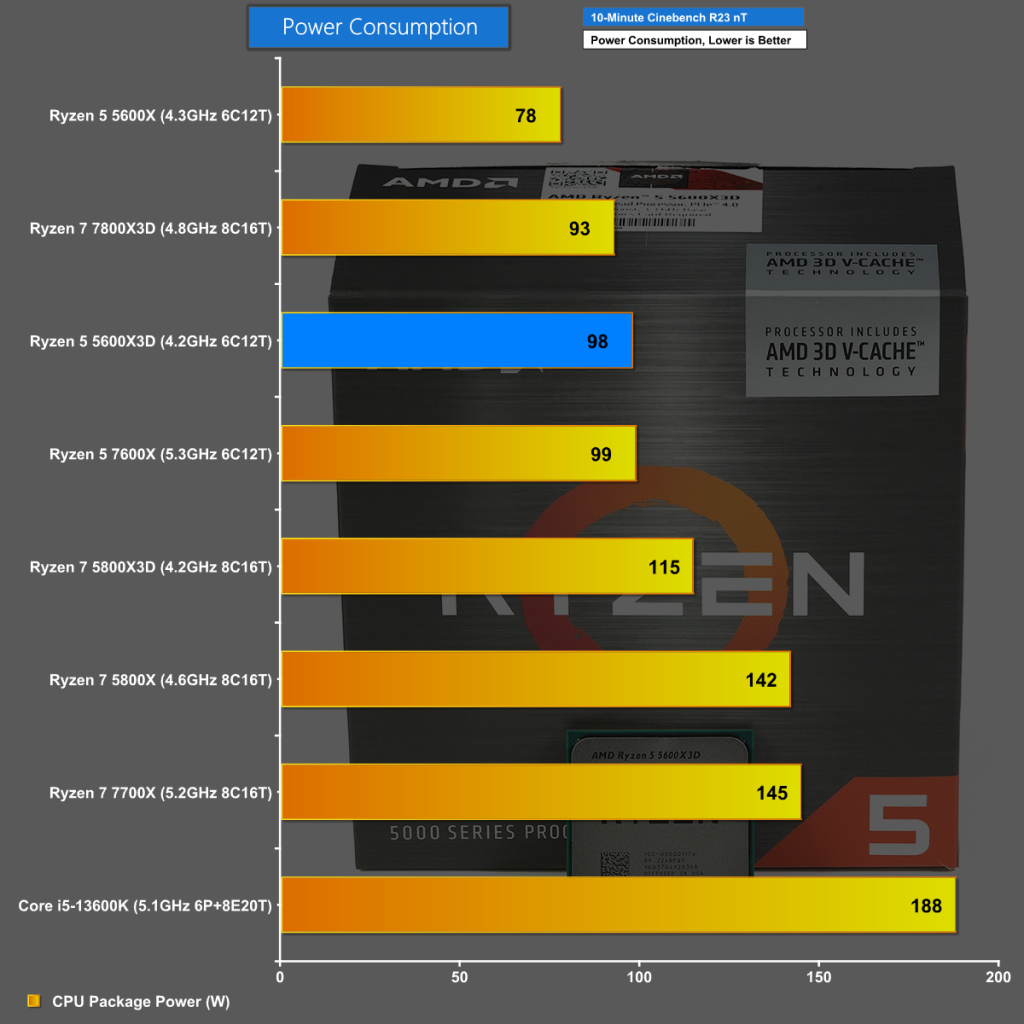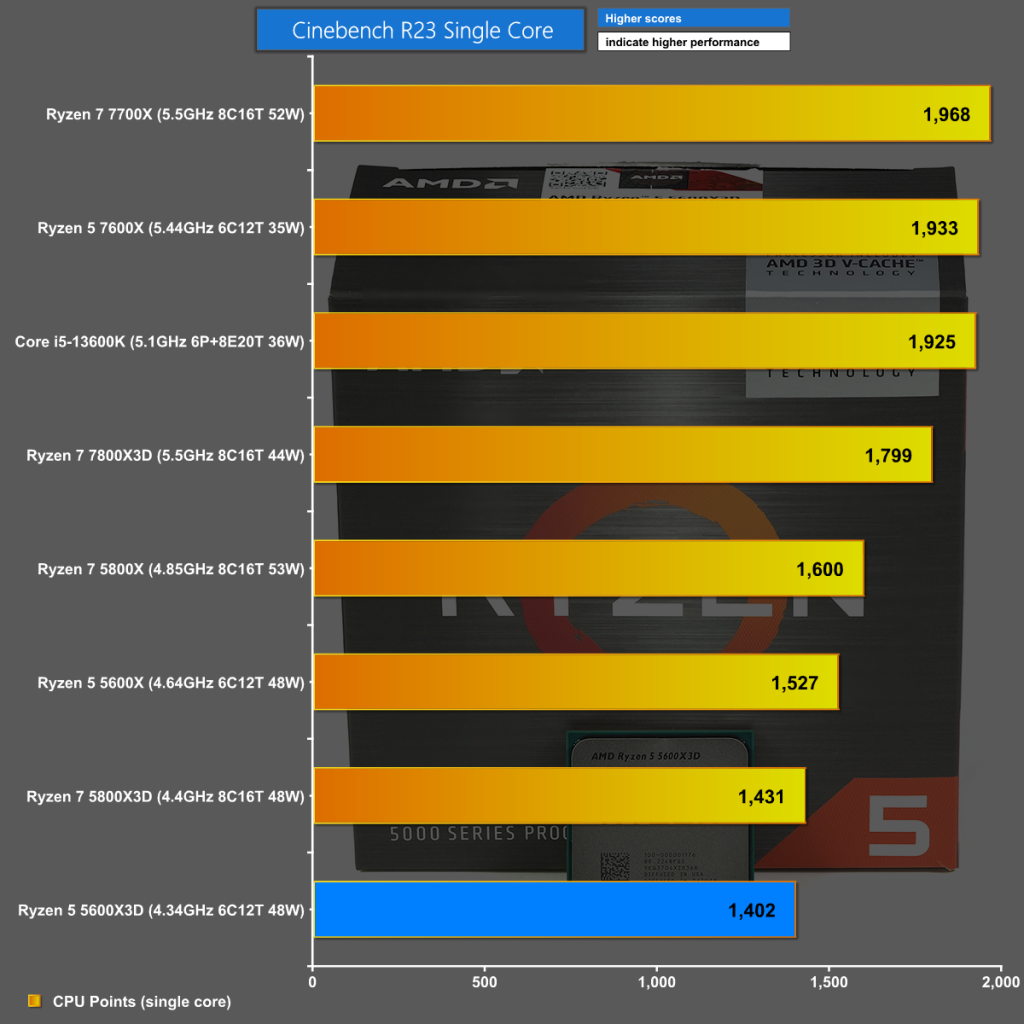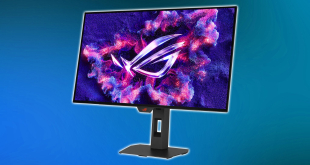Testing and Performance: CPU
To test the Ryzen 5 5600X3D we used two test platforms as shown in our video and detailed below.
Processors: AMD Ryzen 5 5600X3D, Ryzen 5 5600X and Ryzen 7 5800X3D
CPU Cooler: Corsair H150i Elite LCD
Motherboard: Gigabyte B550 Aorus Master
Memory: 32GB Corsair Vengeance LPX DDR4-3600 C16
Graphics card: Gigabyte RTX 4080 16GB
Power supply: Seasonic Prime PX-1600 ATX 3.0
SSD: PNY CS3140 M.2 NVMe
OS: Windows 11
Processor: AMD Ryzen 5 7600X
CPU Cooler: Corsair H150i Elite LCD
Motherboard: Gigabyte X670 Aorus Elite
Memory: 32GB G.Skill Trident Z5 Neo DDR5-6000 C30
Graphics card: Gigabyte RTX 4080 16GB
Power supply: Seasonic Prime PX-1600 ATX 3.0
SSD: Sabrent Rocket 4.0 M.2 NVMe
OS: Windows 11
We also took test data for other CPUs such as the Intel Core i5-13600K from our recent review of the AMD Ryzen 7 7800X3D that you can see HERE.
Cinebench R23 Multi Core
In Cinebench R23 Multi Core the Ryzen 5 5600X3D sits at the bottom of the chart. This will be a recurring theme in our CPU tests, although things improve when we move on to gaming.
Power Consumption in Cinebench R23
Power Consumption for the Ryzen 5 5600X3D is surprisingly high in Cinebench R23 and comes in 20W higher than the regular Ryzen 5 5600X. It is hard to believe that 96MB of cache requires so much power, which leads us to believe the silicon in this CPU is of questionable quality.
CPU Temperature
We use a 360mm Corsair AIO on our test bench that has no difficulty keeping the Ryzen 5 5600X and 5600X3D under control, however it is interesting to note the difference in temperature between these two CPUs.
Cinebench R23 Single Core
In Cinebench R23 Single Core the Ryzen 5 5600X3D chugs along at 4.34GHz down at the bottom of our chart.
 KitGuru KitGuru.net – Tech News | Hardware News | Hardware Reviews | IOS | Mobile | Gaming | Graphics Cards
KitGuru KitGuru.net – Tech News | Hardware News | Hardware Reviews | IOS | Mobile | Gaming | Graphics Cards






